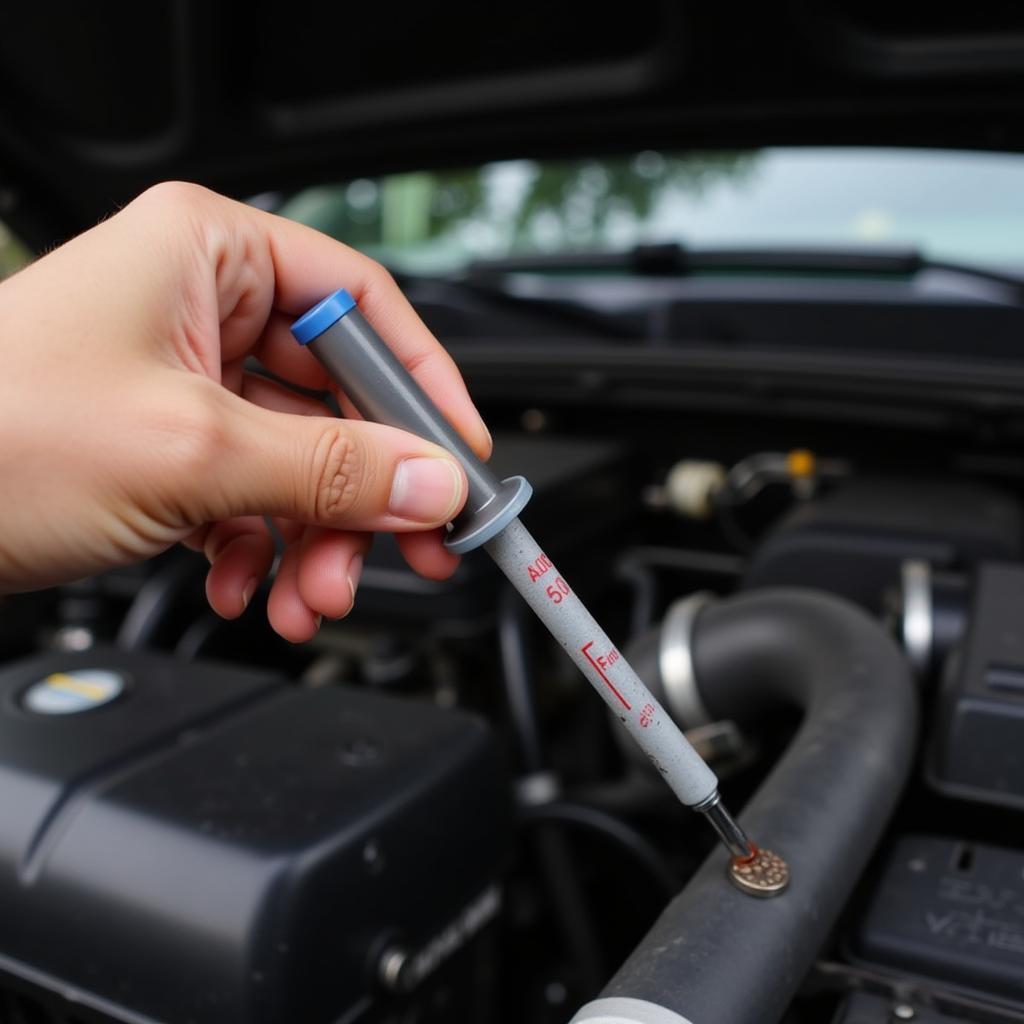Knowing How To Schedule Car Maintenance is crucial for keeping your vehicle running smoothly and avoiding costly repairs down the road. Proper maintenance not only extends the life of your car but also ensures your safety and improves fuel efficiency. This guide provides a comprehensive approach to scheduling car maintenance, offering valuable insights for car owners, repair shop managers, and automotive technicians.
Understanding Your Car’s Maintenance Needs
Every vehicle has unique maintenance requirements outlined in the owner’s manual. This document is your bible for car care. It specifies service intervals based on mileage and time, detailing everything from oil changes and tire rotations to more complex procedures. Don’t underestimate the importance of this document!
Deciphering the Owner’s Manual
The owner’s manual can sometimes be confusing. Look for a maintenance schedule chart, which typically outlines services based on mileage intervals (e.g., every 5,000, 10,000, or 30,000 miles). Pay attention to both “normal” and “severe” service schedules. If you frequently drive in harsh conditions like extreme temperatures, stop-and-go traffic, or dusty environments, you’ll likely need to follow the “severe” schedule.
 Car maintenance in severe driving conditions
Car maintenance in severe driving conditions
Factoring in Your Driving Habits
How you drive significantly impacts your car’s maintenance needs. Do you mostly drive short distances? Are you a highway cruiser? Do you tow heavy loads? These factors influence the wear and tear on your vehicle and should be considered when scheduling maintenance. For example, frequent short trips can put more strain on the engine and require more frequent oil changes.
Creating a Personalized Car Maintenance Schedule
While the owner’s manual provides a general guideline, creating a personalized schedule tailored to your specific driving habits and conditions is essential.
Utilizing Technology for Reminders
Several apps and online tools can help you track your car’s maintenance. These tools allow you to input your vehicle’s information and driving habits, then generate reminders for upcoming service appointments. Some even integrate with your car’s onboard diagnostics system for real-time monitoring. Is technology your friend? In this case, absolutely!
 Car maintenance app reminder on a smartphone
Car maintenance app reminder on a smartphone
Keeping Records: A Must-Do
Maintaining detailed records of all maintenance performed on your vehicle is vital. This documentation not only helps you stay organized but also proves invaluable when selling your car. Keep all receipts and service records in a dedicated folder or use a digital storage system.
Common Car Maintenance Tasks and Their Frequency
Understanding the frequency of common maintenance tasks helps you plan ahead and budget accordingly.
Oil Changes: The Lifeblood of Your Engine
Regular oil changes are crucial for engine health. Most vehicles require an oil change every 3,000 to 5,000 miles, but this can vary depending on the type of oil used and driving conditions. Consult your owner’s manual for the recommended interval.
Tire Rotations and Balancing: Ensuring Even Wear
Tire rotations and balancing typically occur every 5,000 to 7,500 miles. This practice promotes even tire wear, extending their lifespan and improving handling.
“Regular tire rotations are like giving your tires a spa day. They ensure even wear, keeping you safe and saving you money in the long run.” – John Davis, Automotive Engineer at Apex Motors
Brake Inspections: Your Safety Net
Brake inspections should be performed at least once a year or every 12,000 miles. This involves checking the brake pads, rotors, and fluid levels.
How Often Should You Schedule Car Maintenance?
The frequency of your car maintenance depends heavily on factors like your car’s age, mileage, and your driving habits. Sticking to your car’s recommended maintenance schedule, as outlined in your owner’s manual, is the best way to ensure its longevity and performance. Remember, preventative maintenance is always cheaper than major repairs!
“Think of car maintenance like going to the dentist. Regular checkups prevent small issues from becoming big, expensive problems.” – Maria Sanchez, Lead Mechanic at AutoCare Plus
Conclusion
How to schedule car maintenance effectively involves understanding your car’s specific needs, creating a personalized schedule, utilizing helpful tools, and keeping accurate records. By following these guidelines, you can keep your car running smoothly, extend its lifespan, and enjoy a safer, more reliable driving experience. For personalized assistance with your car maintenance needs, connect with AutoTipPro at +1 (641) 206-8880 or visit our office at 500 N St Mary’s St, San Antonio, TX 78205, United States. We’re here to help you keep your car in top shape!






Leave a Reply